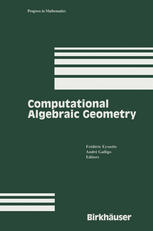Ivan Herman (eds.)0387550755, 9780387550756, 3540550755
The ultimate goal of all 3D graphics systems is to render 3D objects on a two-dimensional surface such as plotter output or a workstation screen. The approach adopted by most graphics systems is to perform a central or parallel projection of the objects onto the view surface. These systems have to make use of the mathematical results of projective geometry. This monograph has as its aim the derivation of a framework for analyzing the behavior of projective transformations in graphics systems. It is shown that a mathematically precise description of the projective geometrical nature of a graphics system leads not only to a deeper understanding of the system but also to new approaches which result in faster or more precise algorithms. A further aim of the book is to show the importance of advanced mathematics for computer science. Many problems become easier to describe or to solve when the appropriate mathematical tools are used. The author demonstrates that projective geometry has a major role to play in computer graphics. |
Table of contents :
Introduction….Pages 1-4
Projective geometry in general….Pages 5-52
Practical use of four dimensional geometry….Pages 53-83
Modelling clip….Pages 85-99
Projective algorithms….Pages 101-128
Conclusions….Pages 129-130
Directions for further research….Pages 131-133
An unsolved problem: Shaded B-spline surfaces….Pages 135-139 |







Reviews
There are no reviews yet.